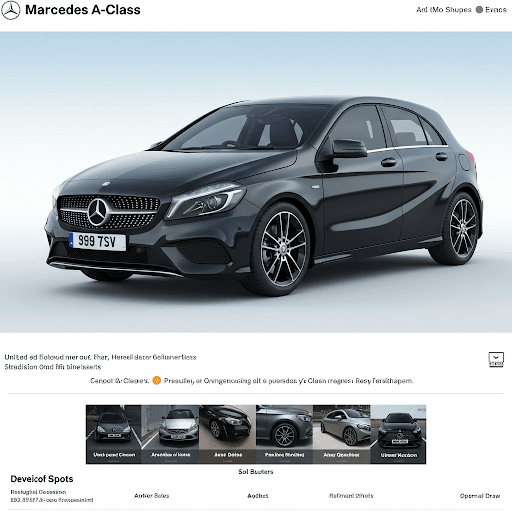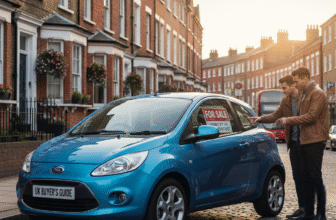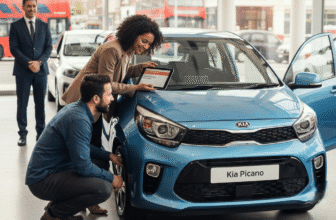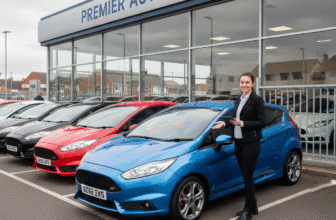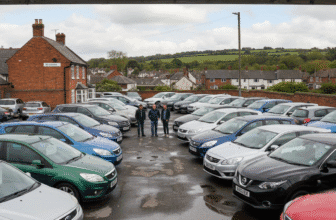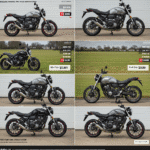
Your Guide to Finding and Buying Used Motorbikes in the UK: Leveraging MCN and Beyond
The allure of the open road, the freedom of two wheels, the rumble of an engine – owning a motorcycle is a dream for many across the UK. Whether you’re a seasoned rider looking for your next machine or a newcomer eager to start your journey, the used motorbike market offers a fantastic gateway. It’s a world brimming with choice, value, and character. Navigating this market, however, requires some know-how. Platforms like Motorcycle News (MCN), with its extensive ‘Bikes for Sale’ section, have become invaluable resources for countless British bikers. This guide will delve into the world of buying and selling used motorbikes in the UK, using MCN as a key example, but equipping you with the knowledge to succeed wherever you find your perfect ride.
Why Choose a Used Motorcycle? The Perks of Pre-Loved Power
While the gleam of a brand-new bike straight from the showroom is undeniable, the used market holds significant advantages, making it the preferred route for many riders:
- Cost Savings: This is the most obvious benefit. New vehicles depreciate fastest in their first couple of years. Buying used means the initial owner has absorbed the steepest drop in value, allowing you to get significantly more bike for your money, or simply save a considerable sum.
- Wider Selection: The used market isn’t limited by current manufacturing runs. You can find models that are no longer produced, special editions, bikes with desirable modifications already installed, or simply a greater variety of styles and engine sizes within your budget.
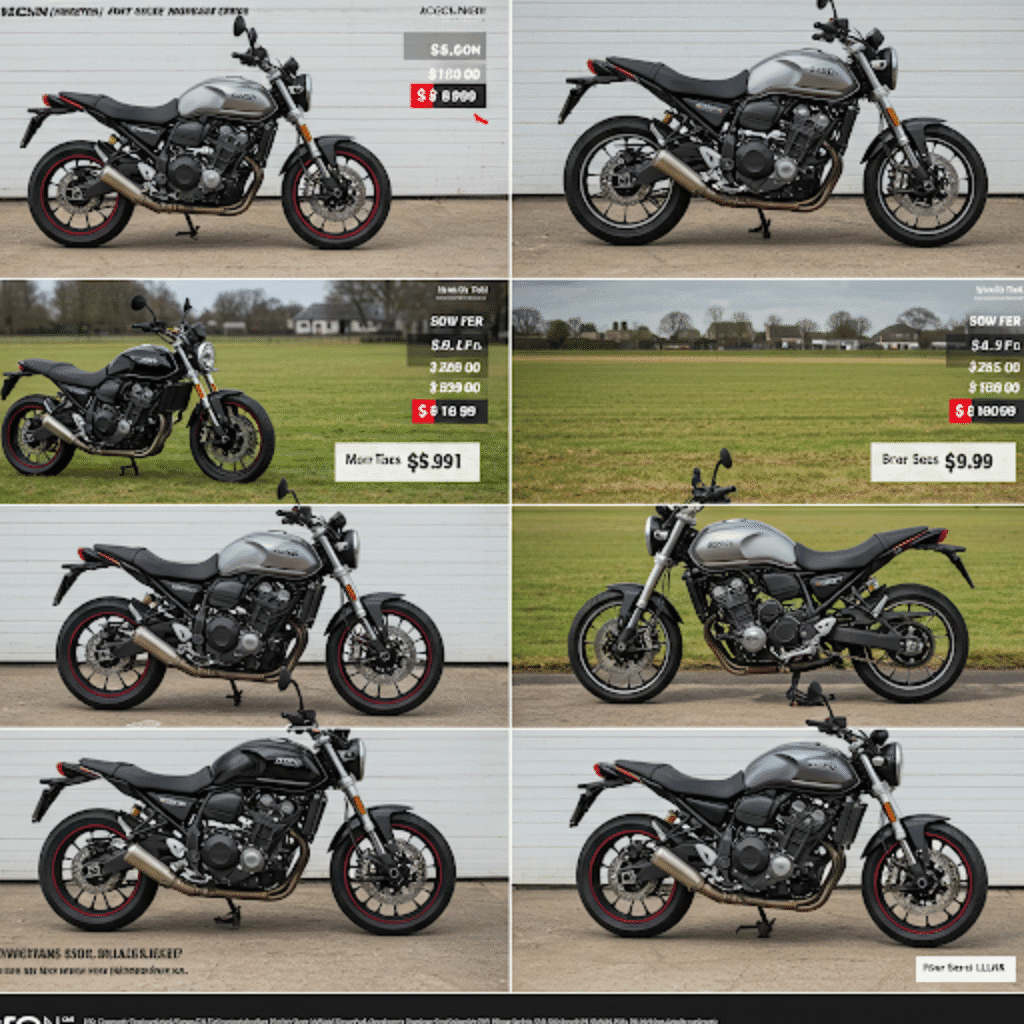
- Lower Insurance Premiums: Generally, insuring a used motorcycle costs less than insuring its brand-new equivalent, contributing to lower overall running costs.
- Proven Reliability (Often): While thorough checks are essential, a bike that’s already been on the road for a few years has often had any initial manufacturing niggles ironed out. Service history can provide peace of mind.
- Less Worry About Minor Scratches: Let’s be honest, dropping a bike can happen, especially for newer riders. A small scuff on a used bike often feels less painful (financially and emotionally) than on a pristine, factory-fresh machine.
Where to Look: MCN Bikes for Sale and Other Avenues
The internet has revolutionised how we buy and sell vehicles, and motorcycles are no exception. Several platforms cater specifically to the UK bike market:
- MCN Bikes for Sale: As one of the UK’s leading motorcycle publications and websites, MCN boasts arguably the largest dedicated online marketplace for used bikes. Its platform allows you to filter searches extensively by make, model, price range, year, location, engine size, mileage, and even specific keywords. It features listings from both private sellers and dealerships across the country, offering a vast pool of options. The integration with MCN’s news, reviews, and advice content makes it a comprehensive resource.
- AutoTrader Bikes: Similar to MCN, AutoTrader has a significant section dedicated to motorcycles, again featuring private and trade sellers. It offers robust search functionality and a large inventory.
- eBay Motors: eBay can be a source for bikes, though it requires careful navigation. You’ll find everything from pristine examples to project bikes and potential bargains, but due diligence is paramount. Pay close attention to seller feedback and descriptions.
- Dealer Websites: Many franchised and independent motorcycle dealers list their used stock on their own websites. Buying from a reputable dealer often comes with the benefit of warranties, pre-sale inspections, and potentially finance options, albeit usually at a higher price point than private sales.
- Online Forums and Social Media Groups: Dedicated owner’s club forums or Facebook groups can be good places to find specific models, often sold by enthusiasts who have cared for their machines. However, these platforms may lack the structured search and buyer protection features of larger marketplaces.
- Local Adverts & Word of Mouth: Don’t discount traditional methods entirely, though they are less common now. Sometimes a bike might be advertised locally or through知り合い (acquaintances).
Using platforms like MCN provides a structured, searchable, and often vast starting point. Their filtering tools save immense time compared to trawling through less organised listings.
Finding Your Ideal Steed: Defining Needs and Budget
Before diving headfirst into the listings, take time to clarify what you need and what you can afford.
What Kind of Rider Are You?
Consider your primary use:
- Commuting: Look for something reliable, economical, comfortable in traffic, perhaps with weather protection or luggage capacity (e.g., scooters, naked bikes, smaller adventure bikes).
- Touring: Comfort over long distances, luggage capability, weather protection, and range are key (e.g., dedicated tourers, adventure tourers, some cruisers).
- Weekend Blasts & Track Days: Performance, handling, and braking power take priority (e.g., sports bikes, performance nakeds).
- Cruising: Laid-back style, comfort for moderate distances, often V-twin engines (e.g., cruisers, choppers).
- Off-Roading: Suspension travel, ruggedness, knobbly tyres (e.g., motocross, enduro, trail bikes).
- Learner Legal (A1/A2 Licence): Ensure the bike complies with the power and power-to-weight restrictions for your licence category. Many manufacturers offer compliant models, and MCN/AutoTrader often have specific filters for this.
Setting a Realistic Budget
Your budget isn’t just the purchase price. Factor in:
- Insurance: Get quotes beforehand, as premiums vary wildly based on the bike, your age, experience, location, and security measures.
- Road Tax (VED): Check the rate for the specific bike model and year.
- MOT: If the bike is over three years old, it needs an annual MOT test. Check when the current certificate expires.
- Riding Gear: Essential! Budget for a helmet, jacket, trousers, gloves, and boots if you don’t already have them.
- Initial Maintenance/Contingency: Even well-maintained used bikes might need consumables like tyres, brake pads, or fluids soon. Set aside a buffer for unexpected repairs.
- Security: A good lock (or two) and potentially a tracker are wise investments, often required by insurers.
The Buyer’s Journey: From Screen to Street
You’ve found a potential bike on MCN or another platform. What next? Follow a structured approach to avoid costly mistakes.
Step 1: Initial Contact and Questions
Before arranging a viewing, contact the seller (private or dealer). Ask key questions:
- Why are they selling?
- How long have they owned it?
- Does it have a full service history? Where was it serviced?
- Has it ever been dropped or involved in an accident?
- Are there any known faults?
- Is the V5C registration document in their name and at their address? (Crucial for private sales!)
- When is the MOT due?
- Is there any outstanding finance on the bike?
Their answers (and how readily they answer) can tell you a lot.
Step 2: The Viewing – More Than Skin Deep
Arrange to view the bike in daylight and preferably in dry weather. Take your time; don’t feel rushed. If possible, bring a knowledgeable friend. Here’s a basic checklist:
- Overall Impression: Does it look well-cared-for? Are there signs of neglect or abuse? Check the general cleanliness.
- Paperwork First: Ask to see the V5C logbook. Check that the VIN (Vehicle Identification Number) and engine number on the document match *exactly* those stamped on the bike’s frame (usually headstock) and engine casing. Ensure the seller’s name and address match the V5C. Examine the service book and MOT certificates. Discrepancies are a major red flag.
- Cosmetics: Look for scratches, dents, and rust, particularly on the tank, frame, exhaust, and wheel rims. Check panel gaps for consistency – uneven gaps can indicate crash damage and poor repair. Lift the seat to check the subframe for damage or corrosion.
- Frame and Forks: Inspect the frame for cracks, dents, or non-standard welds, especially around the headstock and engine mounts. Check the forks for pitting or rust on the stanchions (the shiny upper parts) and ensure the seals aren’t leaking oil (look for oily residue). Check for smooth suspension movement by pushing down firmly on the handlebars and seat.
- Engine: Look for oil leaks around gaskets and seals. Check the oil level and condition via the sight glass or dipstick. Ask for the engine to be started from cold – listen for rattles, knocks, or excessive smoke from the exhaust (blue smoke = burning oil, white smoke = coolant issues, black smoke = running rich).
- Chain and Sprockets: Check the chain tension (refer to owner’s manual for spec). Look for tight spots by rotating the rear wheel. Inspect the sprocket teeth – hooked or broken teeth mean replacement is due.
- Brakes: Check brake fluid levels and clarity. Inspect discs for excessive wear, scoring, or warping. Check pad thickness. Squeeze the levers – they should feel firm, not spongy.
- Tyres: Check tread depth across the entire width (UK legal minimum is 1mm, but more is recommended). Look for cuts, bulges, or cracking in the sidewalls. Check the date codes (DOT code) – tyres degrade over time, even if unused. Aim for tyres less than 5-6 years old.
- Electrics: Test all lights (headlight high/low beam, indicators, brake lights front/rear, number plate light), the horn, and check the dashboard warning lights illuminate and extinguish correctly.
- Exhaust: Check for rust, holes, or damage. Ensure it’s securely mounted.
Step 3: The Crucial HPI Check
Before handing over any money, perform an HPI check (or similar vehicle history check from providers like Experian AutoCheck or RAC). This costs a small fee but is invaluable. It checks for:
- Outstanding Finance: If finance is owed, the finance company legally owns the bike until settled.
- Insurance Write-Offs: Has it been declared Category S (structurally damaged but repairable) or Category N (non-structurally damaged)? Avoid Category A or B bikes (must be crushed/parts only).
- Stolen Vehicle Register: Is the bike reported as stolen?
- Logbook Check: Verifies V5C details.
- Mileage Discrepancies: Checks against national databases (though not foolproof).
Finding any of these issues (especially finance or stolen status) is usually a reason to walk away immediately.
Step 4: The Test Ride – Feel and Listen
A test ride is essential. However, sellers (especially private ones) will rightfully be cautious. Expect to leave the full cash amount as a deposit and proof of your own comprehensive insurance covering riding other bikes (check your policy!). If buying from a dealer, they will usually have trade plates and specific insurance cover.
During the ride:
- Does the engine pull smoothly through the rev range?
- Does the clutch engage smoothly without slipping or dragging?
- Does the gearbox change cleanly up and down, without false neutrals?
- Do the brakes feel strong and progressive? Any pulsing or strange noises?
- Does the bike handle predictably? Does it pull to one side (potential frame/fork damage)?
- Listen for any unusual noises – knocking, whining, grinding.
- Check instruments are working correctly.
Step 5: Negotiation – Agreeing a Fair Price
If the bike checks out but perhaps needs new tyres or has minor cosmetic issues you noted, use these points (politely) to negotiate the price. Research similar bikes on MCN/AutoTrader to understand the market value. Be realistic and respectful. Decide your maximum price beforehand and stick to it.
Step 6: Payment and Paperwork – The Final Hurdle
Once a price is agreed:
- Payment: Bank transfer is often the safest method for large sums, providing an electronic trail. Cash is possible but carries risks (counterfeit notes, personal safety). Avoid unusual payment methods. Never send money before seeing the bike and paperwork.
- V5C Logbook: The seller fills in the ‘new keeper’ section (Section 6/Section 10 depending on V5C version) with your details. They tear this off and give it to you (the V5C/2 ‘new keeper’s supplement’). They send the main part of the V5C to the DVLA. You use the V5C/2 to tax the vehicle online or at a Post Office. You should receive the new V5C in your name from the DVLA within a few weeks. **Do not leave without the V5C/2 slip.**
- Receipt: Get a written receipt confirming the sale details: date, price paid, bike registration, make, model, VIN, names and addresses of buyer and seller, and signatures.
- Insurance: You MUST have valid insurance in place *before* you ride the bike away. Arrange this beforehand or use your phone once the deal is done. Riding without insurance is illegal and carries severe penalties.
- Tax: Vehicle tax does not transfer with ownership anymore. You MUST tax the bike in your name before riding it on public roads. The seller should receive an automatic refund for any remaining tax.
Selling Your Bike? Tips for Success
If you’re on the other side of the transaction, using platforms like MCN to sell your bike can be very effective. Maximise your chances of a smooth sale:
- Preparation is Key: Clean the bike thoroughly. A sparkling bike looks well-maintained. Perform basic checks and maintenance (oil level, chain tension, tyre pressures). Gather all paperwork: V5C, service history, MOT certificates, manuals, spare keys.
- Honest and Detailed Advert: Write a clear, comprehensive description. Include make, model, year, mileage, MOT expiry, service history summary, and any modifications. Be honest about any flaws – it builds trust and avoids wasted viewings. Mentioning why you’re selling can also help.
- Quality Photos: Take numerous high-resolution photos from all angles in good light, against a clean background. Include close-ups of key features, instruments, tyres, and any notable imperfections mentioned in the ad.
- Sensible Pricing: Research similar bikes on MCN, AutoTrader etc., to set a competitive price. Be realistic about condition and mileage. Decide if you’re firm or open to offers.
- Safe Viewings: Arrange viewings at your home address (matching the V5C). If possible, have someone else present. Be wary of requests to meet in unusual locations. For test rides, insist on seeing their driving licence and proof of comprehensive insurance covering riding other bikes. Always hold the full agreed cash price (or proof of cleared bank transfer) as a deposit before letting them ride.
- Secure Payment: Prefer bank transfer or cash (check notes carefully). Do not release the bike or paperwork until funds are confirmed/cleared.
- Completing the Sale: Fill in the V5C correctly, give the buyer the V5C/2 slip, and send the main V5C section to the DVLA promptly. Provide a written receipt. Notify your insurance company that you have sold the bike.
MCN: A Community Hub Beyond Classifieds
It’s worth remembering that MCN offers more than just its ‘Bikes for Sale’ section. The website and publication are packed with news, professional bike reviews, road tests, long-term reports, technical advice, buying guides, and a vibrant community forum. Engaging with this wider content can deepen your knowledge, help you choose the right bike, and connect you with fellow enthusiasts – enriching your entire motorcycling experience.
Conclusion: Your Two-Wheeled Adventure Awaits
Buying a used motorcycle in the UK is an exciting prospect, opening up a world of freedom and fun. Platforms like MCN Bikes for Sale provide an excellent starting point, offering a vast selection and powerful search tools to help you pinpoint potential machines. However, finding the listing is just the beginning. By approaching the process methodically, conducting thorough checks (especially paperwork and HPI), taking a careful test ride, and understanding the legal requirements for ownership transfer, tax, and insurance, you can navigate the used market confidently and minimise the risks. Whether you find your dream machine through MCN, another online platform, or a local dealer, do your homework, trust your instincts, and prepare for the thrill of hitting the road on your very own bike. Happy hunting!


